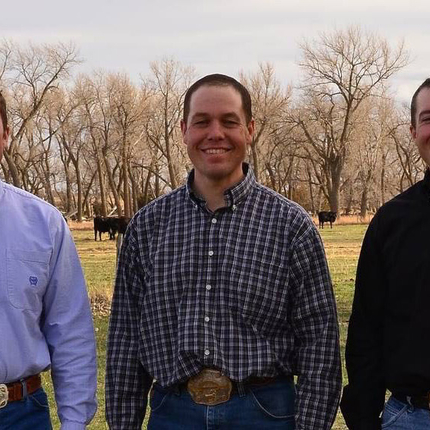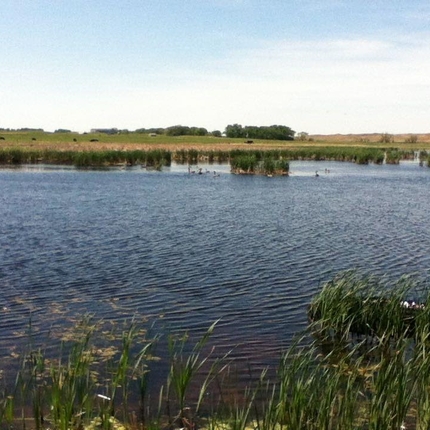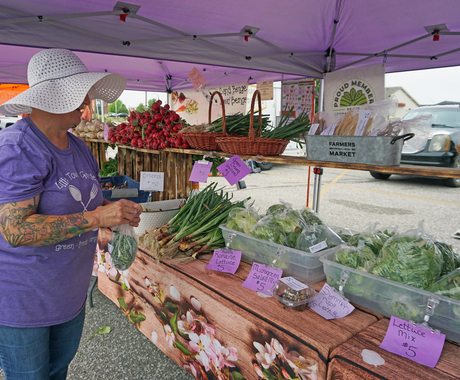The Beel brothers are third-generation stewards of their family ranch located on the Brown and Cherry County line in the Nebraska Sandhills. Started in 1937 by Henry O. Beel, ranch records reveal conservation practices were an early concern: soil and water planning, water placement, rotational grazing, and planting of tree groves began in the 1940s. Today conservation and range management continue to play a central role at the Beel Ranch.
Owned and operated by brothers Frank, Henry and Adam, along with their wives Jennifer, Mary and Jenny, the Beels continue to apply the conservation principles passed down from generation to generation. However, the practices themselves have evolved with time, explains Henry.
“We’ve been planting trees ever since my grandfather started the ranch. Twenty years ago we planted just one species of tree, but now we plant many species,” Henry says of the 35 tree groves the family has planted on the ranch. “So if there’s a disease,” he explains, “it doesn’t wipe out the entire planting.”
The trees are essential to the sustainability of the ranch, benefiting both people and animals by reducing soil erosion, protecting crops and livestock, and providing food and habitat for wildlife.
The Beels have plans to plant three more tree groves next Spring with the assistance of the Middle Niobrara Natural Resource District.
In addition to trees, the brothers have spent countless hours planning, designing and coordinating the installation of 32 miles of pipeline, including 89 hydrants, 6 wells and 45 new tanks across the 22,000-acre cattle operation. Adding to the 67 existing windmills and tanks, the brothers prioritized an adequate water supply to better use every pasture in an integrated rotational grazing plan.
The pipeline was possible with a cost-share program with the Natural Resources Conservation Service’s (NRCS) Environmental Quality Incentives Program (EQIP) and took three years to complete.
“By adding water, the pastures are just used differently now,” said Henry. “It has helped out with grass and general productivity.” In addition, the improved efficiencies in grazing have led to increased habitat for upland bird species, raptors and large game.
A little over a decade ago, the Beel brothers started to address another water issue on the ranch. They noticed that after heavy rains, the water rushed down the creek, downcutting or deepening the channel and creating an erosion problem.
A soil and water conservation solution was proposed by the Sandhills Task Force – which helped to install 5 water control structures to slow down the creek and back up the water in strategic places. The structures created irrigated meadow environments – improving the growing conditions for their primary winter feed source. The water has also helped to attract new wildlife to those areas: swans, muskrats, ducks and geese. The Beels have seen migrating Sandhills cranes use the habitat as well.
“It takes a little planning to put in things like the pipeline, the water control structures, and even the trees. But it’s well worth the time and effort,” said Henry.
In 2004, the Beels signed a 10-year agreement with the Nebraska Game & Parks Commission, the Sandhills Task Force, and U.S. Fish & Wildlife Services to put in 5 water control structures. Four areas on the ranch were fenced out that range from 5 to 20 acres in size. These areas offer wildlife protection and breeding and nesting grounds for wildlife.
“I’ve noticed in the 16 years I’ve been here there are more turkeys, more antelope, more mule deer,” said Henry’s wife, Mary Beel. Grouse, pheasants, bald eagles, prairie chickens, falcons and hawks are also common sights on the ranch.
“We’re just trying to always improve the land,” said Henry. The brothers have plans for three or four more miles of cross fencing in the next few years, as well as more trees for windbreaks and wildlife protection. But the work of conservation is ongoing, he explains.
“Even though our ranch has been around for over 75 years, every time I go down to the pasture I’m looking at: where can we add more water? Where do we need to cross fence more pastures?”
Henry says he and his brothers are no different than his grandfather or father or other Sandhills ranchers, except they might be more public about their family’s story. The Beels were the 2013 recipients of the Leopold Conservation Award. They are active with the regional, state, and national cattlemen’s associations and host a number of student groups and other visitors to their ranch.
“We want to do our part and share our story; we’re taking care of the land, we’re taking care of the water because we depend on it.”
Feature image: Sandhills ranchers and conservationists, L to R: Henry J. Beel, Frank Beel, and Adam Beel. Story and photos by Kat Shiffler.




